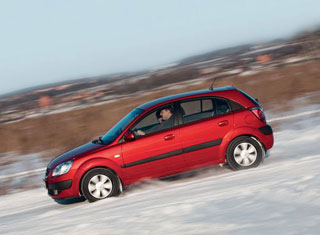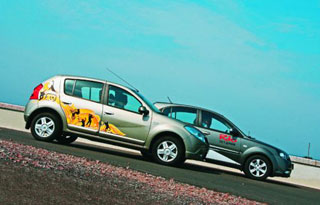Test drive Kia Rio hatchback since 2009 hatchback
Pies with filling
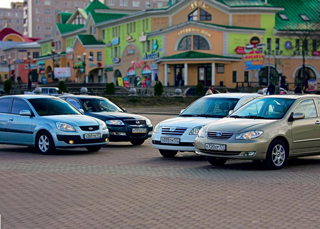 The Chinese and Korean argued, which of them is better for the Russian consumer. The arguments of both sides were listened to by Sergey Voskresensky. Photo: Konstantin Yakubov.
The Chinese and Korean argued, which of them is better for the Russian consumer. The arguments of both sides were listened to by Sergey Voskresensky. Photo: Konstantin Yakubov. But the pies are fried, with onions, cabbage, rice, potatoes and jam! Flone, do not yawn, inexpensive! And, recalling the fragrance of your mother’s home or grandmother's hotels, you involuntarily slow down a step in advance, this is just a distant reminder of them. Almost certainly street food will be fresh and monotonous. But if, against the background of fast -food everyday life, something similar to home cuisine suddenly bursts out, be sure that the product will not go unnoticed!
Of course, I will exaggerate a little, splating out sarcasm in advance in relation to at least two participants in this test. But the fiercely the debate around the close Far Eastern neighbors, the more obvious: there is still a huge abyss between cars from China and Korea.
Yes, the Celestial Auto is developing stormy, sometimes staggering pace. That's just the orientation is alarming: copies, copies and once again copies. Moreover, not licensed, but dubious quality home self -poll. And in this all-Chinese process, an undisguised pride is visible for the relationship of the same Byd F3 with Toyota-Corollah. And for an impressive list of basic equipment for most manufacturers, it is displayed in the option. Maybe a relatively inexpensive Cheri FOR with a 2-liter engine developed by the Austrian company AVL will eclipse less powerful competitors and conquer experts with cute contours of a kind of large and spacious body?
It seems that opponents from Korea Nissan-Almer Classic and Kia-Rio will not be able to resist such arguments. But let's think about why this most ordinary consumer consumption is more expensive, and the feeling causes much more automobile?
Without stereotypes
The ordinary consumer, who grew up in the post -Soviet space among small engines and unpretentious bodies, is a kind of perception of the car. It is difficult for many, for example, it is difficult to imagine that a large (almost Volga) vehicle, with an impressive trunk and a quite modern 130-horsepower engine, may suddenly take and not like it. How so? And spectacular and, we must pay tribute, neat outlines of the body, abundance of chromium, alloy wheels, finally? And inside, after all, light leather, polished aluminum, a richest set of equipment, including climatic installation and electroregulation of driver's seat!
It is difficult to object to such emotional arguments, while, flowing through the steering wheel and the littered front stance of the body, grunting and scolding, you will not get a pillow of the handbag lurched under the ceiling of the seat of the seat, on the chicken. You will not feel its chilling-sore surface, simplicity, if not the primitiveness of a form in which neither a gram of desire to keep the body in a convenient position. What is there to evaluate when the steering wheel is almost on the knees, in front of the eyes of the pruning of the main devices, and the outer mirrors, narrow, like loopholes, completely repel the desire to praise a good visibility? In addition, explicitly, a fake climate refuses to mix air flows, the driver's glass sees in the lower position, but the relics of that era intervene in the relationship with Chery: they say, he will fall in love! The motor is like 2.0 liters, like a distinct box, steering wheel, pedal.
Indeed, the Fora engine partly justifies hopes. If you spur it from the heart, taking the tachometer arrow to the four thousandth mark, the car becomes light and mobile. But with a drop in revolutions weaken and everything else. Imaging, reconstruction very quickly I notice: the lever of the box has to work almost more than on a small -leaf. What seemed solid with calm driving becomes boring and inexpressive. And here are still heavy and non -informative brakes, mismanced pendants striving to cause an attack of seas diseases. Especially the rear, which in deep waves shoots the stern of the car as if saying goodbye to it forever. Some kind of catapult!
Thanks to such fencing, the handling of the handicap looks only an expected addition to an without any complex character. Lowing, intensive lateral swing with a strict and sharp steering wheel make the device wayward and quite dangerous at high speed.
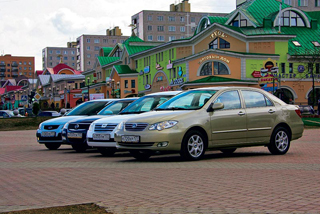 The result of cloning
The result of cloning It seems to be Toyota-Korollah of the Praise generation in each line, cramper, button, toggle switch. Even from below, perfectly copied levers, back beam, exhaust system. But under the hood of Byd F3 for some reason, a 1.6-liter Mitsubishi engine. It seems that in the Middle Kingdom they know their ways to reconcile eternal rivals.
And yet analogies are inappropriate. You are convinced of this, looking at the mica, everything in a small mesh window of the combination of devices. And no scales flashing the scales and arrows that flare up with bright light! Flat and limp forms of the seat, covered with perforated Chinese skin, more reminiscent of dermatin, can still be compared with the handle of the handicap. I note even a more convenient and high back. But when he rested his head on the ceiling, and with twisted legs in the pedal, due to a small range of longitudinal adjustment, it became uneasy. Well, the car cannot even hint at the kinship with the Toyota, when the inner mirror in it dangles like something on a rope! When the surrounding tree is called even cheap plastic, the tongue does not rotate, and a small chip on the body almost in front of his eyes blooms with a brown spot! The comparison is only appropriate with the fellow countryman as a fellow in misfortune. Parents do not choose!
I admit, by BYD more success than the handbag, ergonomics (apparently, a more thoughtful object has been taken for copying), the luggage compartment is more spacious and deeper, more rationally the rear seat. Perhaps I put a point on this, since here the work of the climatic installation is stupid and incomprehensible, and external mirrors evoke thoughts about the unified workshop for all the Chinese for their manufacture.
The transmission F3, singing in the I and II programs, sounds in unison with the first impressions, introducing despondency and associations with structures of the early 1960s. True, a vocal gearbox as a speed set is quite briskly coping with duties. But here, the howls of gears are replaced by cacophony from the noise of tires, aerodynamic flows and motor.
The engine is generally not bad, but like its 2-liter countryman, weighs to high speed, becoming expressive only after 3,5004,000 rpm. It is worth dropping a tachometer arrow a little, the car becomes gray and mundane. The chassis is slightly better than that of Cheri. No, of course, I won’t call the F3 pendants comfortable either, they count the small bumps of the road in such detail and noisily. But BYD is not inclined to build up on more serious potholes, and the energy intensity of pendants is better.
I wanted to say that the car is more successful and in terms of controllability: Genes after all! But at the time of cloning, they were nevertheless struck by a certain virus, so the result came out not entirely predictable, one -sided. Thanks to decent pendants, the car is clearer, it behaves better in corners. But there is very much feedback on the steering wheel, and the car is pretty much scouring. In general, two boots of a couple, and far from the most successful and fashionable style.
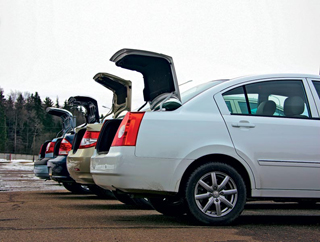 Strongness of simplicity
Strongness of simplicity How great it is when they are not trying to surprise you with a cheap luxury, to prove that even the most successful clone is expressive. Torn by Koreans, the old, kind Nissan-Almer is not able to cause a storm of emotions. You find yourself in a poor, but neat and solid car, into the world of verified efforts, plastic plastics, dark fabric upholstery. The car is not trying to surprise you to make you richer than you are, in some places it affects the archaic of solutions (such is the slider of the heating system). But all this looks native, familiar, comfortable. And even if the steering wheel is large, but the seat adapts to the characteristics of the body in one motion, although its proportions, the control ranges cannot be called ideal. The most ordinary combination of devices? Perhaps, it can be reproached with archaic, but it is read excellently. And so in everything, for whatever you take, whatever you touch.
Nothing particularly remarkable is a classic alter on the go. An ordinary engine with an even, measured character, in which, however, routes are slightly larger than we would like. No, he reliably performs his work, completely without straining during ordinary driving. But the stretched transmissions and the absence of a spark in the mood of the motor are preventing more.
What certainly annoys is the controllability, or rather lethargy, thoughtfulness of the reaction of the machine, adjacent to the solid body rolls. It is not clear where it came from: after all, that, the Dokorean Almer did not suffer from such sores. And here the lazy steering wheel to such an extent that for the detour of irregularities you have to calculate the trajectory in advance.
Although what to compare with? Against the background of the Chinese, Nissan, no doubt, will seem convenient and solid. In addition, there are sensitive, verified brakes, good smoothness, good acoustic comfort. And, most importantly, everything works, almost perfectly interacting. Of course, against the backdrop of a more modern competitor, Almera will not be smooth. Let's listen to another opinion.
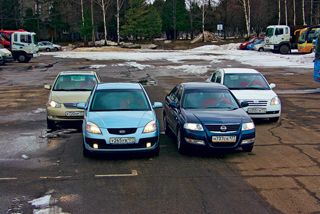 The tribute of our time
The tribute of our time Assuring that the sedan of Kia Rio is something special means to scoop the soul. A completely ordinary car, the whole advantage of which is only in the obvious novelty. Of course, in comparison with the same Almer, it looks more modern, and the interior is more interesting. It seems to be the same plastics and dark tones that dominate the materials of the upholstery, but in the car you feel differently. It is brighter, more fun, friendly. Expressive, memorable devices are striking. A cozy seat, to the simple forms of which I do not want to find fault. Small crayfish, intelligible pedals, window climate. In a word, everything was the same as in the nearby cars, it began to play and earned.
I’m even getting ready to give a head start to the little one in the quarter: what is there to expect from a buzzer with a volume of 1.4 liters, except that cheerfulness at high speeds? And suddenly, with surprise, I pay attention to how rarely I have to switch the programs. The fact that even on the fifth Rio is more confident and more reliable than the others accelerates from 50 60 km/h. And if you can only complain about the lack of agility after 140 km/h. Here you have a small -leaf!
The rivalry of the two Koreans unfolds in the field of comfort. Rio is well balanced by noise and generally leaves a quite favorable impression. Here he easily competes with Almer. But its suspensions are tougher, they cope well with small irregularities, but are prone to detailed repetition of the profile of the road. Therefore, on serious potholes, Nissan looks preferable.
But the smoothness of the course is the last argument of Almer. In other nominations, the newcomer Rio leaves no chance to the opponent. The brakes are equally effective. And the behavior on the road, if not impeccable, is much better than the rest. Assertive, with a spark, reaction in corners, good feedback. A great feeling of a direct and sensitive attitude to the driver’s teams. All this makes Kia Rio light, comfortable and obedient in everyday life.
Let's imagine that the Chinese copied our, Russian car, say Prior or Kalina. At the same time, they did not get into the power scheme of the bodies, change the settings of the chassis and other systems, while complementing the machines inexpensive, but rather reliable electronics, electric drives, and security systems. Finally, they simply gently collected and painted the bodies, equipping them with good plastic. And what? Probably it would have turned out nice.
This is not yet said about the purebred Chinese supplied to our market. They are cheap and at first glance perfectly equipped. But as soon as any serious rivals, disadvantages of structures appear on their field, miscalculations in the settings become obvious. To avoid them, it is necessary not only to copy, but to carefully study the neighbors first of all those who are very close
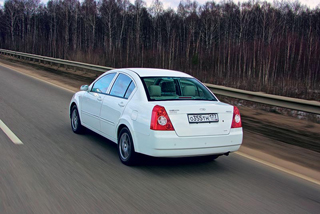 Chery Fora
Chery Fora At the end of 2006, the production of a car from China was established in Kaliningrad.
Engines: gasoline 1.6; 2.0 l (109; 129 hp).
Gearbox: 5-speed mechanical.
Configuration: three levels.
Price in Russia: 360 190414 500 rub.
+ A spacious trunk, attractive for the Russian consumer, the engine and the level of equipment.
_x0007_ - mediocre ergonomics, climate, brakes, handling and smoothness.
General assessment 7.0
It has attractive and interesting solutions. However, when they fell into a whole car, alas, they did not receive a good result.
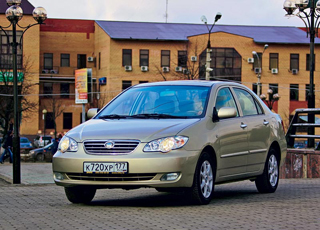 Byd F3
Byd F3 The sedan made his debut in China in 2005, in 2007, the first copies of Toyota-Korollah appeared in Russia.
Engine: gasoline 1.6 l (100 hp).
Gearboxes: 5-speed mechanical.
Configurations: L-I; G-I; GL-I; GLX-I.
Price in Russia: 299 950393 900 rub.
+ A spacious cargo compartment, a high level of equipment, convenient for passengers.
_x0007_ - closely to the driver and front passenger, mediocre brakes, acoustic comfort and climate.
General assessment 7.1
The external and internal similarity to the famous model only aggravates the shortcomings of a very mediocre machine, which has only two advantages: the size of the salon and trunk.
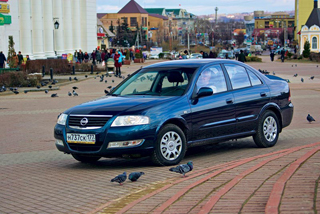 Nissan Almera Classic
Nissan Almera Classic In Russia, the Korean production sedan was represented in April 2006.
Engine: gasoline 1.6 l (107 hp).
Gearboxes: 5-speed mechanical and 4-speed automatic.
Configurations: PE; Re+; Se.
Price: 36 158490 988 rub.
_x0007_ + solid interior, comfortable luggage compartment, good smoothness and acoustic comfort.
_x0007_ - Close up in the back, inexpressive controllability, the rear seat is not transformed.
General assessment 7.8
He lacks originality and expressiveness, but from the standpoint of the consumer goods it is not at all bad.
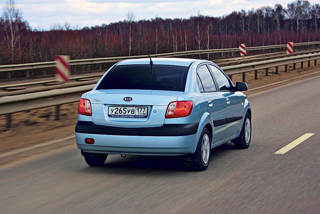 Kia Rio
Kia Rio The premiere of the car took place in January 2005 in Detroit. In Russia, a sedan and hatchback of the domestic and Korean assembly are represented.
Engines: 1.4; 1.6 l (97; 112 hp)
Gearboxes: 5-speed mechanical, 4-speed automatic.
Configurations: standard, comfort, luxury, luxury a/t.
Price: 399 000469 000 rub.
+ Convenient and expressive interior, flexible engine, balanced driving capabilities.
_x0007_ - Close up for the rear passengers, harsh on bumps.
General assessment 7.9
Behind a pretty appearance, a convenient and thought -out car with an interesting set of riding capabilities.
 Come on, sit!
Come on, sit! Washing space for cargo and passengers is one of the basic requirements for inexpensive cars. In addition to mandatory measurements, we decided to just sit the three of us in the back seats we share our impressions.
The external solidity of the Cheri Fore is actually a deception of the rear passengers. Highly inclined racks and the roof falling to the stern press on the heads. It is not possible to slide lower, knees close to the backs of the front seats.
Byd F3 in height and width of the salon is the most spacious. Normally, the hatch in the roof does not sit in front, but the rear passengers have much more freedom. It is a pity, and here the knees are especially nowhere to put, and a massive tunnel interferes with the average passenger.
The three of them to sit in the back seat of Nissan-Almer Art: Closely everyone. It is even more difficult to get out of there because in this configuration they saved on the handles, for which it is convenient to hold on.
Kia Rio is also not a gift for three adult men. In comparison with the Almer, the entrance-exit is slightly more convenient here, the configuration of the back of the front seats is more correct. But still, too, it is crowded.
Sergey Voskresensky: Fans of a car from the Middle Kingdom will surely reproach me in chauvinistic moods. Believe me, I am not against these products. Another annoying: Russia is turned into a huge landfill for testing raw technology.
Sergey Voskresensky
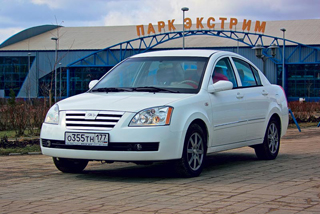
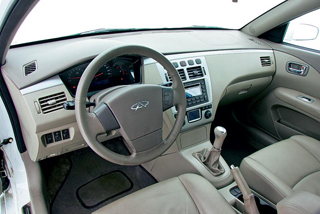
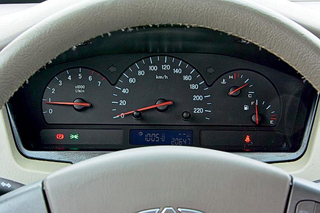
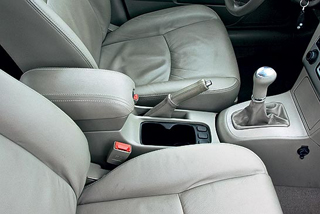
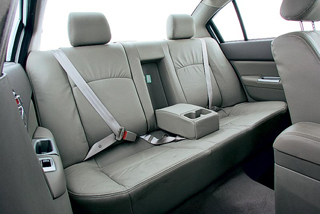
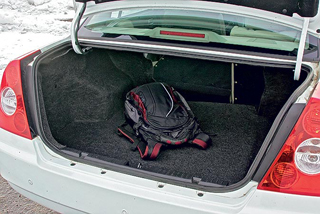
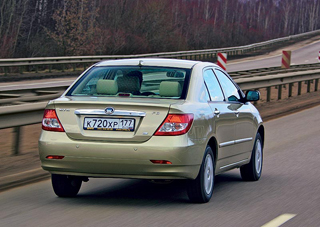
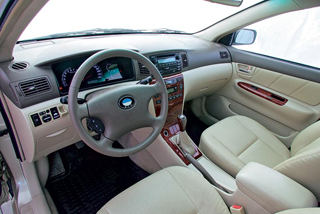
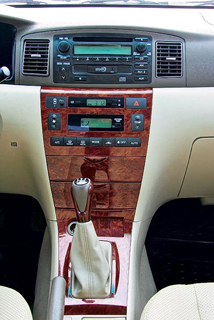
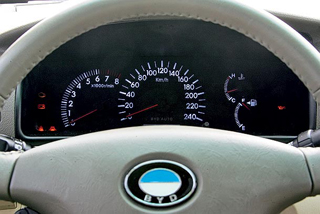
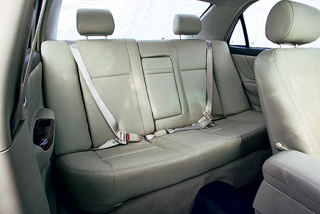
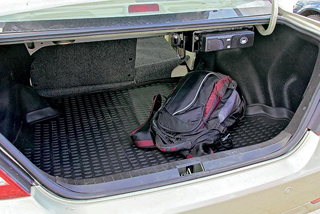
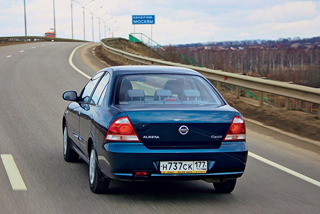
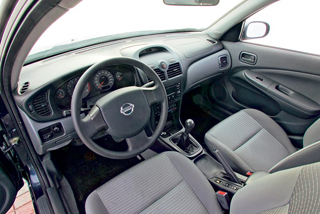
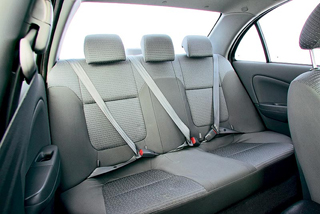
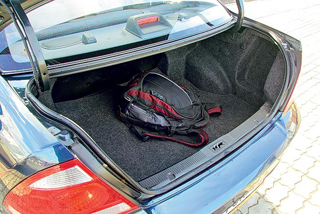
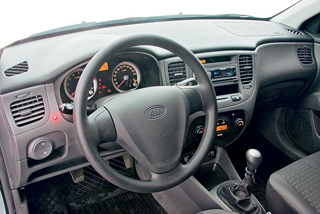
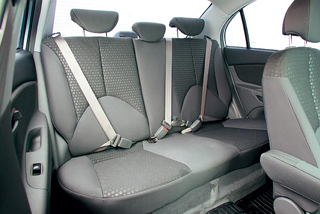
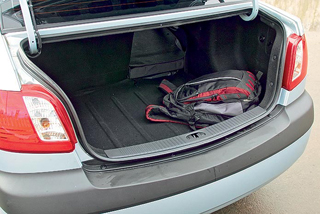
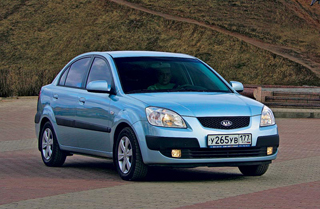
Source: The magazine "Driving"



